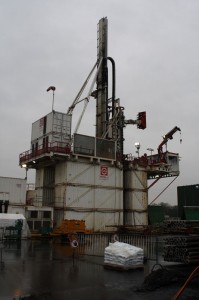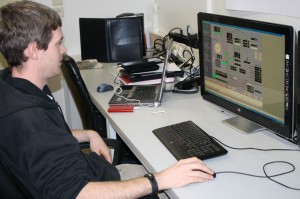Shell targets tight-gas plays with SCADAdrill drilling automation system
By Katie Mazerov, contributing editor

Shell’s SCADAdrill system for low-cost land wells will begin rolling out by the end of the year in tight-gas plays throughout the US if initial implementations are successful, according to Mark Anderson, manager of Drilling Mechanics Technologies for Shell. The system, which applies a Supervisory Control and Data Acquisition (SCADA) system to the drilling process, is being tested in The Netherlands and in the Marcellus and Eagle Ford plays.
Mr Anderson outlined the progress of the system in a presentation, “Drilling Automation Journey – Status Report” at the SPE Well Construction Automation workshop, 16-18 July in Vail, Colo. “With this system, a computer will control the drilling operations instead of a person on a joystick,” he said.
The concept of drilling automation has been around for decades, but only now is it coming to full fruition, he noted. Motivated by the need to increase drilling efficiency and improve safety on rigs, Shell is one of several operators testing integrated automated drilling systems.
While many of the newer-generation rigs feature automated pipe-handling systems and highly mechanized equipment, they do not necessarily have sophisticated automated control systems. “Automation is a step beyond mechanization,” Mr Anderson explained. “For example, mechanized equipment is now available to assist with tripping functions, but an individual is still controlling that machine. With mechanization, we can handle a variety of tasks; with automation, we have the control system do the same thing over and over. But whether the system is mechanized or automated, the industry is taking steps in the right direction.”
Developed in 2009, the prototype is an autonomous drilling and trajectory control system linked to the well plan. It monitors drilling parameters, determines appropriate controls that need to be communicated back to the rig and navigates the course of the wellbore. It was designed for low-cost land drilling in unconventional plays, where development involves thousands of the same kind of wells, Mr Anderson explained.

Repetition key to automation
“These are land wells where there is a tremendous amount of repetition, which is a key requirement for automation. They are ideal for shale and coalbed methane fields, tight oil and gas and heavy oils, which require very high well density.” In that regard, the Eagle Ford was founds to be a suitable test ground because of the high number of wells being drilled.
Using SCADAdrill, the driller activates the system and is always in control, Mr Anderson said. Once turned on, the system starts the pumps and the rotation, then goes back to the bottom and drills a stand in rotary. When the bottom of the joint is reached, it circulates the appropriate amount of fluid and presents the tool joint at the correct height for the driller to disengage the system to allow the crew to set the slips and make the connection.
The system is being enhanced so it can eventually conduct directional drilling in a reliable and consistent way. In this mode, the system will start to drill, and when it needs to correct the actual well path to the pre-programmed, planned well path, it will automatically orient the tool face and slide the drill the required distance in the required tool face,” he explained. “When the directional run is completed, the system will automatically revert to rotary drilling.” The generic system is backward installable on any modern AC rig controlled by a programmable logic controller (PLC) but is not easily compatible with older-generation mechanical rigs.
The SCADAdrill prototype has been received with both keen interest and skepticism in the industry. “It’s important to understand that we’re not replacing humans with automatic drillers,” Mr Anderson continued. “The driller is always in control. We’re augmenting the simple, repetitive tasks the human driller does in a 12-hour shift by allowing the computer to perform these functions so the driller can monitor the operation and do higher-level activities such as preventive maintenance, crew competency, safety or planning.”




